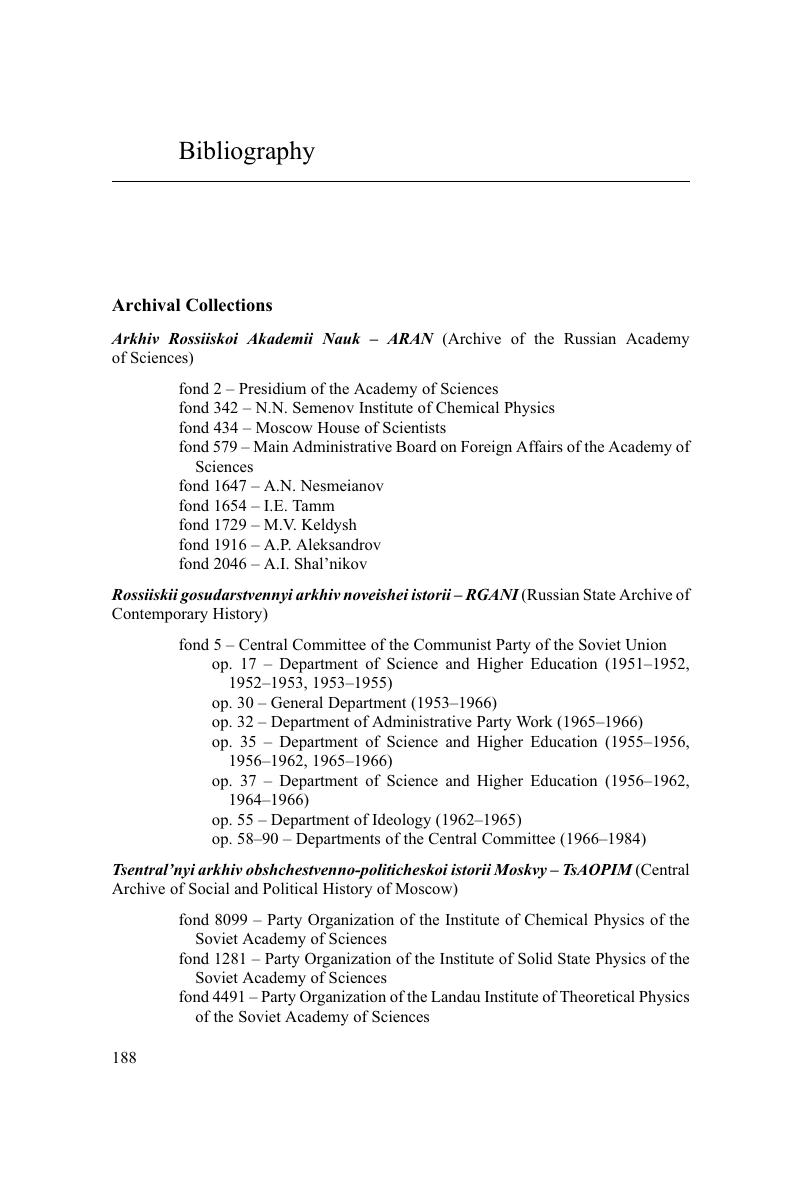Book contents
- The Private World of Soviet Scientists from Stalin to Gorbachev
- The Private World of Soviet Scientists from Stalin to Gorbachev
- Copyright page
- Dedication
- Contents
- Figures
- Acknowledgments
- Introduction
- 1 An Unusual Testing Ground: Building a Town in the Marshes, 1955–1962
- 2 Children of the Great Patriotic War: The Formation of Soviet Scientists, 1930–1955
- 3 “We Were Building a Town for Ourselves”: Everyday Life in Chernogolovka in the 1960s and 1970s
- 4 Scientists, Ideology, and the Communist Party in Chernogolovka
- 5 Chernogolovka Scientists between Loyalty and Dissent: The Soviet Invasion of Czechoslovakia and the Liubarskii Affair
- 6 Scientists behind the Iron Curtain: Traveling Abroad in the 1960s and 1970s
- Conclusion
- Biographical Notes
- Bibliography
- Index
- References
Bibliography
Published online by Cambridge University Press: 26 July 2017
- The Private World of Soviet Scientists from Stalin to Gorbachev
- The Private World of Soviet Scientists from Stalin to Gorbachev
- Copyright page
- Dedication
- Contents
- Figures
- Acknowledgments
- Introduction
- 1 An Unusual Testing Ground: Building a Town in the Marshes, 1955–1962
- 2 Children of the Great Patriotic War: The Formation of Soviet Scientists, 1930–1955
- 3 “We Were Building a Town for Ourselves”: Everyday Life in Chernogolovka in the 1960s and 1970s
- 4 Scientists, Ideology, and the Communist Party in Chernogolovka
- 5 Chernogolovka Scientists between Loyalty and Dissent: The Soviet Invasion of Czechoslovakia and the Liubarskii Affair
- 6 Scientists behind the Iron Curtain: Traveling Abroad in the 1960s and 1970s
- Conclusion
- Biographical Notes
- Bibliography
- Index
- References
Summary

- Type
- Chapter
- Information
- The Private World of Soviet Scientists from Stalin to Gorbachev , pp. 188 - 202Publisher: Cambridge University PressPrint publication year: 2017



